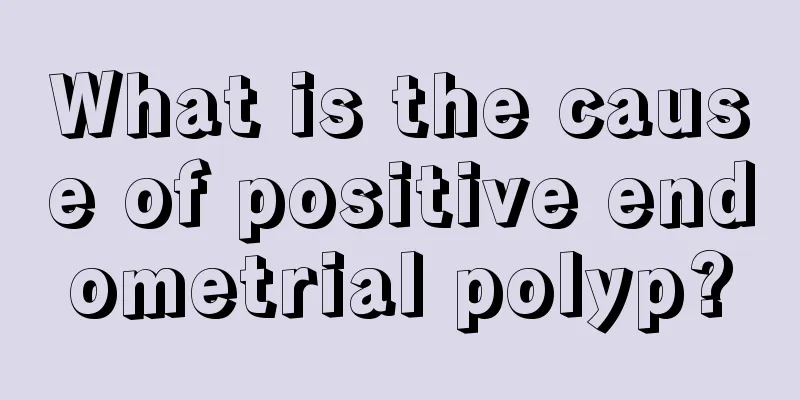What is the cause of positive endometrial polyp?

|
If an examination, such as a general gynecological examination, a microscopic examination, or a cervical smear test, finds that endometrial polyps are positive, it means that you have endometrial polyposis. The disease can also be diagnosed through ultrasound examination. In addition, through diagnostic curettage and analysis of polyp tissue, the presence of endometrial polyps can be detected, and whether the polyps are likely to be flattened can also be found. After the endometrial polyp is positive, treatment should be actively carried out. Currently, the cervix is dilated, polyps are removed, and then the entire uterine cavity is scraped. Diffuse small polyps can be scraped out and sent for pathological examination. Regular follow-up should be conducted after surgery to pay attention to recurrence and malignant transformation and to deal with them in a timely manner. Later, some people successfully used hysteroscopic surgery to remove or laser treat small polyps. If the patient is over 40 years old and the bleeding symptoms are obvious, the above treatment cannot eradicate the bleeding or the bleeding often recurs, total hysterectomy may be considered. Endometrial polyps are very harmful to the body. Patients with endometrial polyps may experience the following symptoms: menstrual disorders, increased menstrual flow, prolonged menstrual period, variable bleeding, and spotting. Large endometrial polyps or polyps that protrude into the cervical canal are prone to infection and necrosis, causing irregular vaginal bleeding and foul-smelling bloody discharge. The harm of endometrial polyps is that they not only hinder the combination of sperm and egg, but may also interfere with the implantation and development of the fertilized egg. If endometrial polyps are accompanied by infection, the environment within the uterine cavity will change, which is not conducive to sperm survival and fertilized egg implantation. Many patients with endometrial polyps are treated with surgical resection alone, but the endometrial inflammation is not completely eliminated. Although the treatment can remove the polyps in a short time, the continuous stimulation of inflammation will cause new polyps to start growing again, eventually leading to recurrence of the disease. Therefore, active antibacterial and anti-inflammatory treatment is also very necessary while performing surgical resection. |
<<: Are endometrial polyps dangerous?
>>: What is the cause of bleeding after endometrial polyp surgery?
Recommend
How to relieve chest pain before menstruation
Chest pain is a symptom that some women experienc...
Insomnia the day before work? Here is a guide to curing post-holiday syndrome
Today is Sunday, and it is also the first day bac...
Does ovarian teratoma surgery affect fertility?
Ovarian teratoma is a relatively common gynecolog...
Is it good to use tampons?
Due to the special physiological structure of wom...
What should I do if I find uterine fluid accumulation during follow-up examination after abortion?
What is the cause of fluid accumulation in the ut...
Causes and treatment of postpartum pain during sexual intercourse
Sexual harmony is the key bridge to a harmonious ...
Can you do beauty treatments after childbirth? Do you know
After a woman becomes pregnant, she has to stop u...
Shocking! The death of a famous writer was actually related to this "silent killer". Be careful in winter!
"I will leave you quietly, ... I think it wi...
Can I have sex when my period has just ended?
Anyone who has a little bit of knowledge knows th...
Dietary treatment for mastitis
"Can I use diet therapy to treat mastitis? W...
What do regular contractions feel like?
Which situation indicates that a pregnant woman i...
What are the symptoms of a short cervix?
As for the symptoms of a short cervix, they are a...
What are the early metastatic sites of breast cancer?
Breast cancer is a serious cancer in life, becaus...
What items does TCT inspection include?
The cervix is a very important part of women, m...
How many days before and after the menstrual period is the safe period
Women's menstrual cycle can be divided into m...









